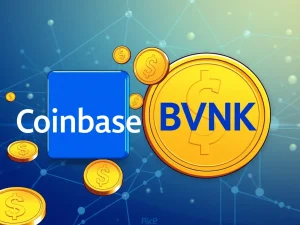Helium Partnership with AT&T Unlocks Massive WiFi Expansion

Big news in the world of decentralized infrastructure! Helium, a prominent decentralized physical infrastructure network (DePIN) project, has announced a significant partnership with US telecommunications giant AT&T. This collaboration aims to expand access to Helium’s community-built WiFi network for AT&T customers.
How Does the Helium AT&T WiFi Partnership Work?
The core of this partnership allows AT&T users to gain automatic access to Helium’s decentralized network. This is facilitated through AT&T’s Passpoint WiFi roaming service. Essentially, when an AT&T customer is near a participating Helium hotspot, their device can automatically connect, providing seamless internet access.
This integration is notable because it bridges the gap between a large, traditional, centralized network provider like AT&T and Helium’s decentralized network infrastructure. Helium’s network is powered by individuals and businesses who operate small cell towers or hotspots, earning rewards for providing coverage.
Understanding Helium’s Decentralized Network
Helium operates on a DePIN model, rewarding participants for deploying and maintaining network coverage. These participants host hotspots, which collectively form the Helium network. According to recent data, the Helium Mobile network boasts over 93,500 hotspots, with a significant concentration within the United States. This extensive coverage map is what AT&T customers can now tap into.
The network is not just theoretical; Helium claims over 800,000 daily users are already leveraging its decentralized network for connectivity. This partnership with AT&T is expected to dramatically increase that number by exposing a massive new user base to the Helium ecosystem.
What Are the Benefits of This DePIN Integration?
Integrating a decentralized network like Helium with a major carrier like AT&T offers several advantages:
-
Accelerated Adoption: Partnering with an industry leader like AT&T can significantly speed up the adoption rate of the Helium network and the DePIN concept itself.
-
Real-World Value: It provides tangible value to both Helium network participants (more usage means more potential rewards) and AT&T customers (expanded WiFi access).
-
Enhanced Coverage: Mobile network operators can potentially use decentralized networks like Helium to supplement their existing coverage, particularly in dense urban areas or challenging indoor locations.
Amir Haleem, co-founder and CEO of Helium Mobile, highlighted the potential, stating that this partnership would “rapidly accelerate the adoption of Helium and provide real-world value.” He also hinted that this is just the beginning, suggesting more developments are on the horizon.
Helium’s Growing Reach and Recent Context
This deal with AT&T is not Helium’s first foray into partnering with traditional carriers. The firm has already signed agreements with Telefónica’s Movistar in Mexico and is reportedly working with other mobile network operators globally to enhance their network capabilities using Helium.
The partnership also follows Helium Mobile’s announcement of a free phone plan in the US in February, further pushing the boundaries of traditional mobile services. While the project has seen significant growth, it also recently navigated regulatory challenges. In January, the SEC filed a lawsuit against Helium developer Nova Labs, which was settled in April for $200,000. Nova Labs stated that the outcome clarified that selling hardware and distributing tokens for network growth doesn’t automatically classify them as securities in the SEC’s view, preventing future similar charges.
Summary: A Landmark Moment for Decentralized Infrastructure
The partnership between Helium and AT&T represents a significant step forward for the DePIN sector and the broader adoption of decentralized technologies. By integrating Helium’s community-driven decentralized network with AT&T’s vast user base via Passpoint, this collaboration brings the benefits of decentralized WiFi to potentially thousands of US locations. It validates the potential of decentralized infrastructure projects to work alongside and enhance traditional centralized services, paving the way for future innovations in connectivity.







